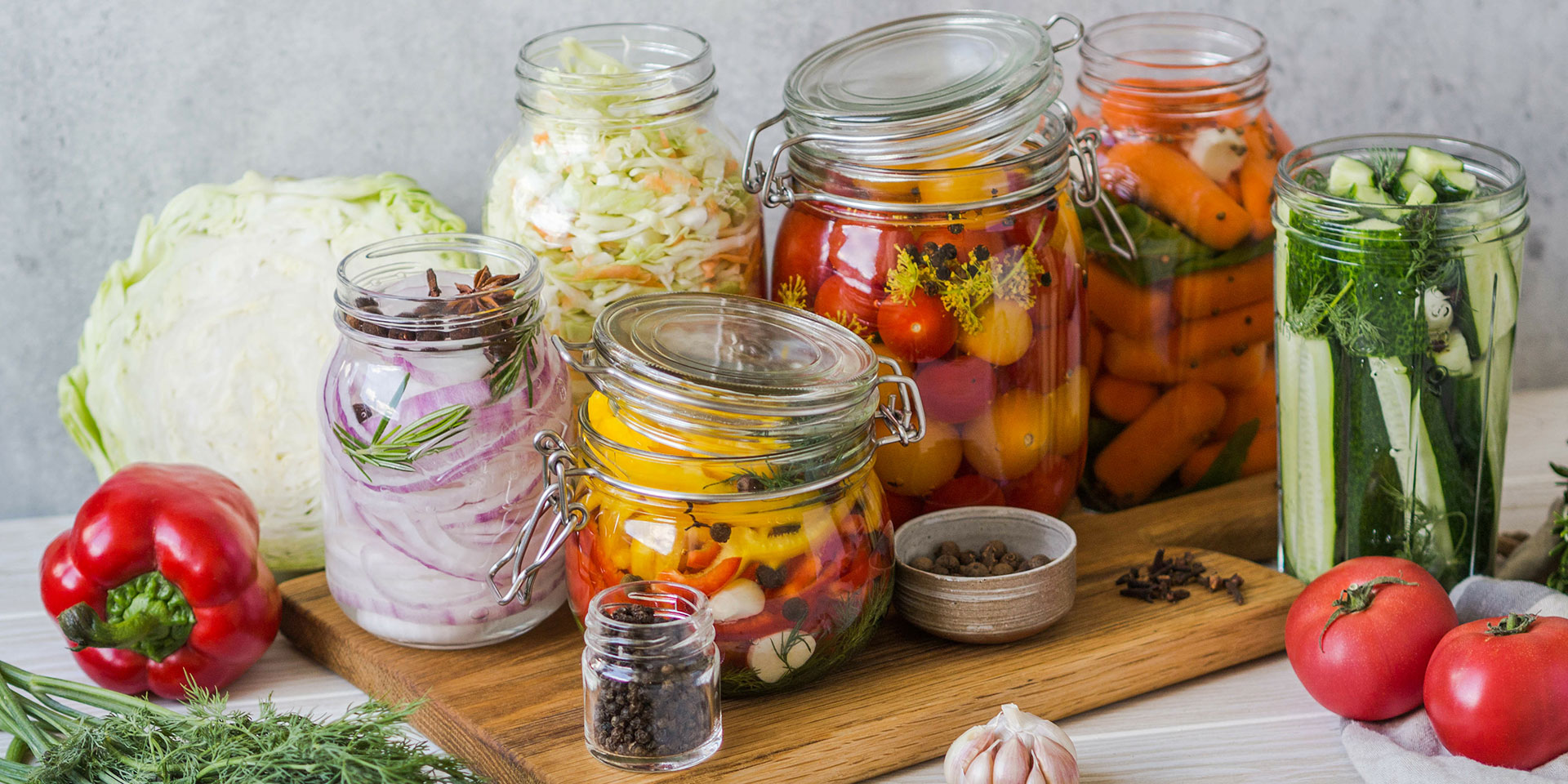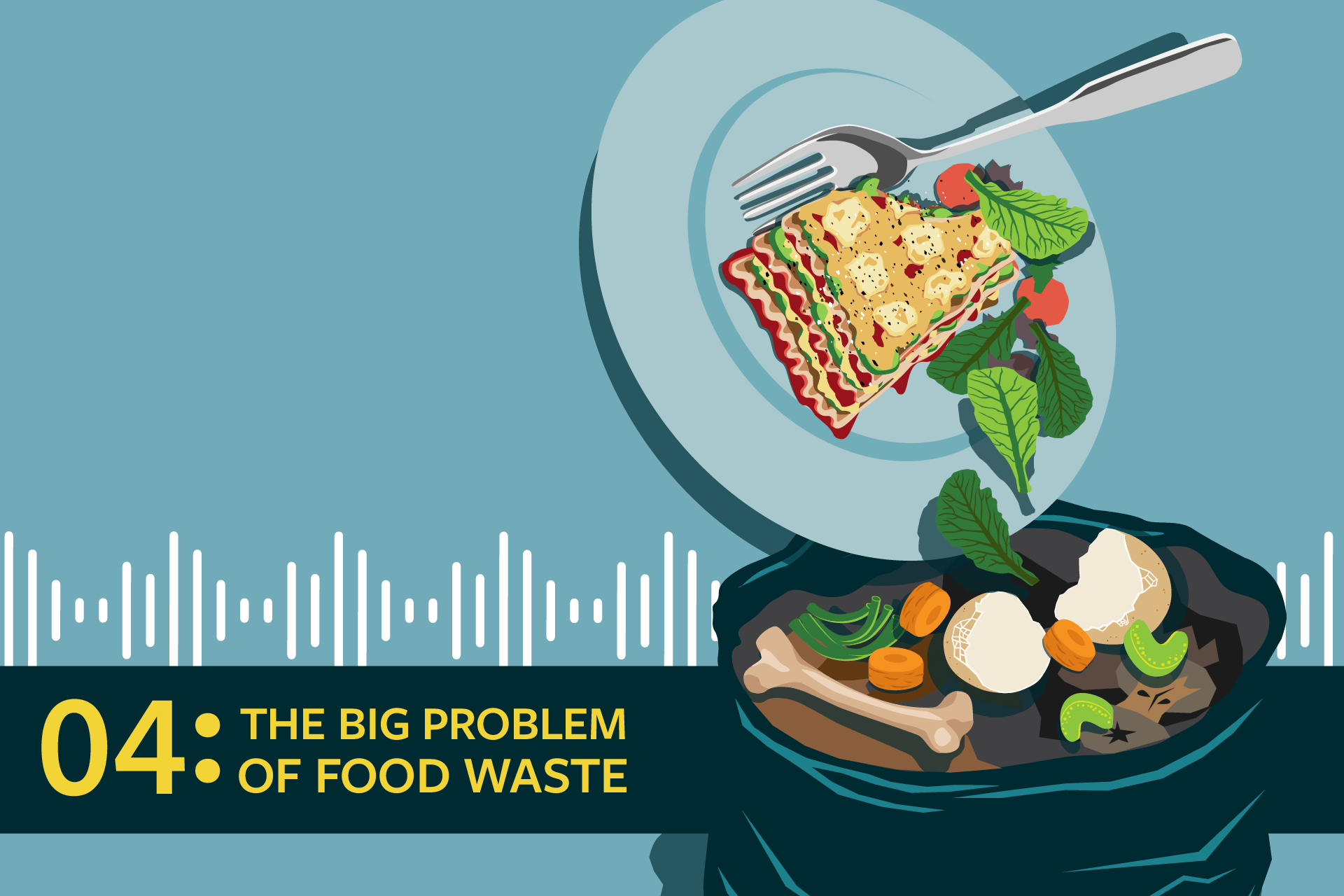Building Bold Flavors and Reducing Food Waste with Fermentation
When we cook, we tend to only use part of each ingredient, leaving skins, stalks, fronds or peels unused and throwing away roughly a quarter of what we buy. But there’s a lot of flavor potential in those scraps, and with a little creativity and some simple tricks it’s easy to unlock. Using as much of each ingredient as you can helps you reduce your carbon footprint, but also helps save money on groceries too, making it a win-win for you and the environment.
There are many different ways to repurpose food scraps that might otherwise end up in the bin, including dehydration, making sauces and pestos, quick pickling, soup stocks, and fermentation. I’ve been teaching classes on reducing food waste for years, and fermentation is always one of the processes that students get most excited about. Here I have pulled together some of my students’ favorite fermentation tricks for reducing waste in the kitchen. I call these pickles, vinegars, drinks and seasoning “scrappy ferments” as a fun way to showcase creative low waste cooking.
Why Fermentation?
Fermentation refers to a whole range of different processes for transforming food, resulting in everything from sauerkraut to cheese to vinegar to wine to miso paste. It is a process in which beneficial bacteria, yeasts, or other microorganisms break down and acidify food, transforming and preserving it. And, it’s an incredibly powerful way to turn your food scraps into something delicious.
It helps to shift your mindset toward whole ingredient cooking: In other words, instead of seeing a carrot as just the root, also think about the tops and peels. What other ingredients do they remind you of? How can you use them in similar ways?
Fermentation is incredibly helpful here because it can transform texture as well as flavor: those carrot fronds can go from raw greens to pesto or a garnish. Tough scraps like broccoli stems can become crunchy-but-not-hard pickles. And, we can either ferment the scraps themselves, like in the lactofermentation recipes below, or we can use the scraps to infuse liquid, like in the recipes for stone fruit vinegar or scrappy booze.
Lactofermentation
Lactofermentation, which is a specific type of fermentation that uses lactic-acid-producing bacteria to preserve foods, is incredibly easy to do, and the result is pleasantly sour, probiotic pickles with a satisfying zing. You can make classic whole pickles (think full sour deli pickles) or use stems and ends like broccoli stems, kale stems, or even carrots that are starting to go soft.
Unlike refrigerator pickles, where a vinegar-based brine is poured over veggies that are then kept in the fridge, these pickles are made with just salt, water and your veggies, which sit out at room temperature to sour as they ferment. To make fermented pickles, just mix up a brine that’s between 2-5% salt (I do ~2 tbsp per quart of water), using plain sea salt or kosher salt. Pack your ingredients into a jar, pour the room temperature brine on top until they’re completely submerged, and allow to ferment at room temperature until they have a flavor you enjoy: I recommend a short ferment on things like kale, which get funky quickly, while other veggies can ferment for several days or even a week.
The same method can be used for hot sauce, too: If you’ve got hot peppers that are on the brink of going bad, along with overripe peaches or other stone fruit, carrot peels, or herbs, you can ferment them just like you do with pickles. The only difference is that you let it ferment until everything is soft, then simply toss it in a blender (brine and all!) and blend to the consistency you want.
You can make a scrappy sort of sauerkraut, too, from your stems, ends, and other leftover bits of raw produce which fermentation expert Sandor Katz calls kraut-chi: just use whatever dense, leafy greens, grated root veggies, or sliced stems and ends to make a delicious fermented condiment: Just use the same method you would use for cabbage sauerkraut.
The most important tip with any ferment is to keep your fruits and veggies below the brine so they ferment safely: I like to pack them in mason jars, close the lid, then carefully open it each day to check their progress. Once they’re ready, simply store them in the fridge.
Infusions
In addition to starting your own fermentation process, you can also infuse your scraps — steep them — in other ferments: vinegar or alcohol. I love making fruit vinegars for sweet and savory applications or to use as a shrub, a sweet and sour drinking vinegar, in cocktails and mocktails, and I make spicy and savory vinegars too (a personal favorite is one made with strawberry and jalapeno tops).
In summer, stone fruit vinegar is a refreshing choice for seasonal food and drink: To make it, just take your overripe peaches, plums, or other stone fruits, pit them, and drop them in a jar. Add vinegar to cover and let the mixture steep for two to four weeks, then strain and store in the fridge.
Scrappy booze, or low-waste alcohol infusions, are another favorite and made essentially the same way: Take your flavorful food scraps (like overripe fruit, herb stems, etc.) and add them to a jar, pouring over a neutral spirit (like vodka) to cover. Let the mixture steep for two to four weeks, then strain. You can have a lot of fun experimenting here: I’ve made food scrap-infused vermouth and gin-inspired drinks when I had a lot of herb stems on hand, and you can swap out the vodka for bourbon to make a delicious peach or strawberry infused drink.
Seasoning Powders
Sometimes, you’ll ferment a fruit or veggie and the flavor is great, but the texture is not. Or, you strain those peaches from your stone fruit vinegar and wonder what to do with the fruit now. Before you throw any of it in the compost bin, turn to your dehydrator (or your oven set to the lowest temperature) to make a flavorful, fun seasoning to sprinkle on your finished dishes, or to use in place of store-bought seasoning blends in marinades, dressings and sauces. Those dehydrated pickled peaches can be ground up and used as a fun garnish for drinks and desserts, too. These seasoning blends are one of my signature low waste moves and a favorite of my students because they’re easy, taste great and can even make unique gifts. Ask my dad! He is a huge fan.
To make your own seasoning blend, just dehydrate your ingredients until they’re bone dry: You don’t want any moisture left in them. Then, using a mortar and pestle, food processor, or a coffee grinder (not the same one you use for your coffee), grind it into a powder. Store in airtight jars.
A Whole World of Creativity
These suggestions are just the tip of the iceberg for scrappy ferments, and can help you explore new flavors and tap into your culinary creativity while reducing waste. Fermentation helps not only with preservation and reuse, but with flavor, unlocking the flavors found in your ingredients and bringing a whole new dimension of its own.
Get the latest food news, from FoodPrint
By subscribing to communications from FoodPrint, you are agreeing to receive emails from us. We promise not to email you too often or sell your information.
Top photo by anaumenko/Adobe Stock.
More Reading
Can recycled soil blends support a more sustainable future?
September 5, 2025
How to make your kids’ school lunch more eco-friendly
August 19, 2025
Looking to jar up the season? Try a canning club
August 7, 2025
Gamify your family’s food waste reduction
June 30, 2025
Can food recyclers help us tackle household food waste?
June 18, 2025
Do organic waste bans and composting programs really take a bite out of food waste?
March 17, 2025
What is Europe getting right about food waste in schools?
November 15, 2024
Municipal composting has increased, but what does that really mean?
May 16, 2024
6 upcycled food trends to watch
February 13, 2024
Food scholar Darra Goldstein on the culinary history of preservation
October 30, 2023



